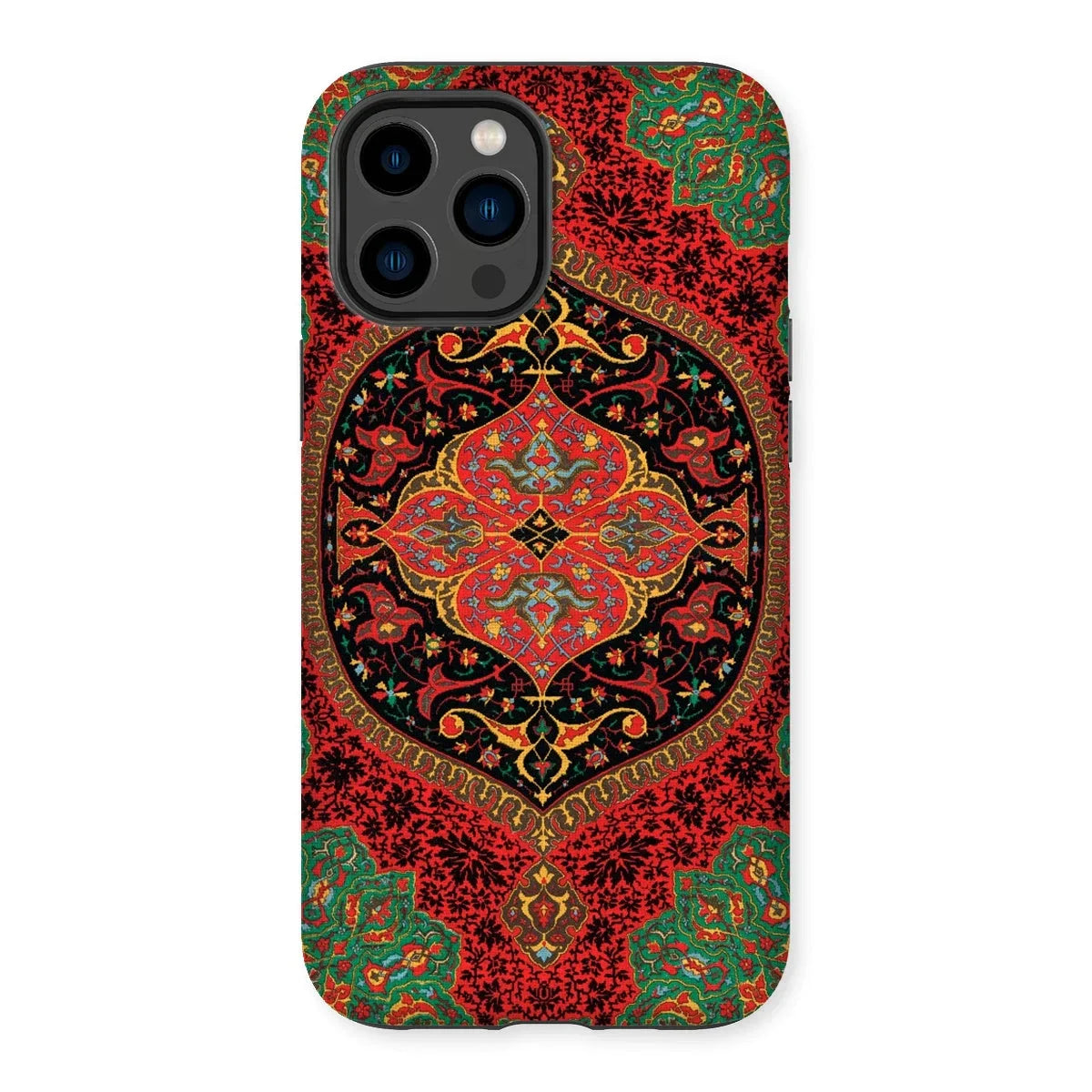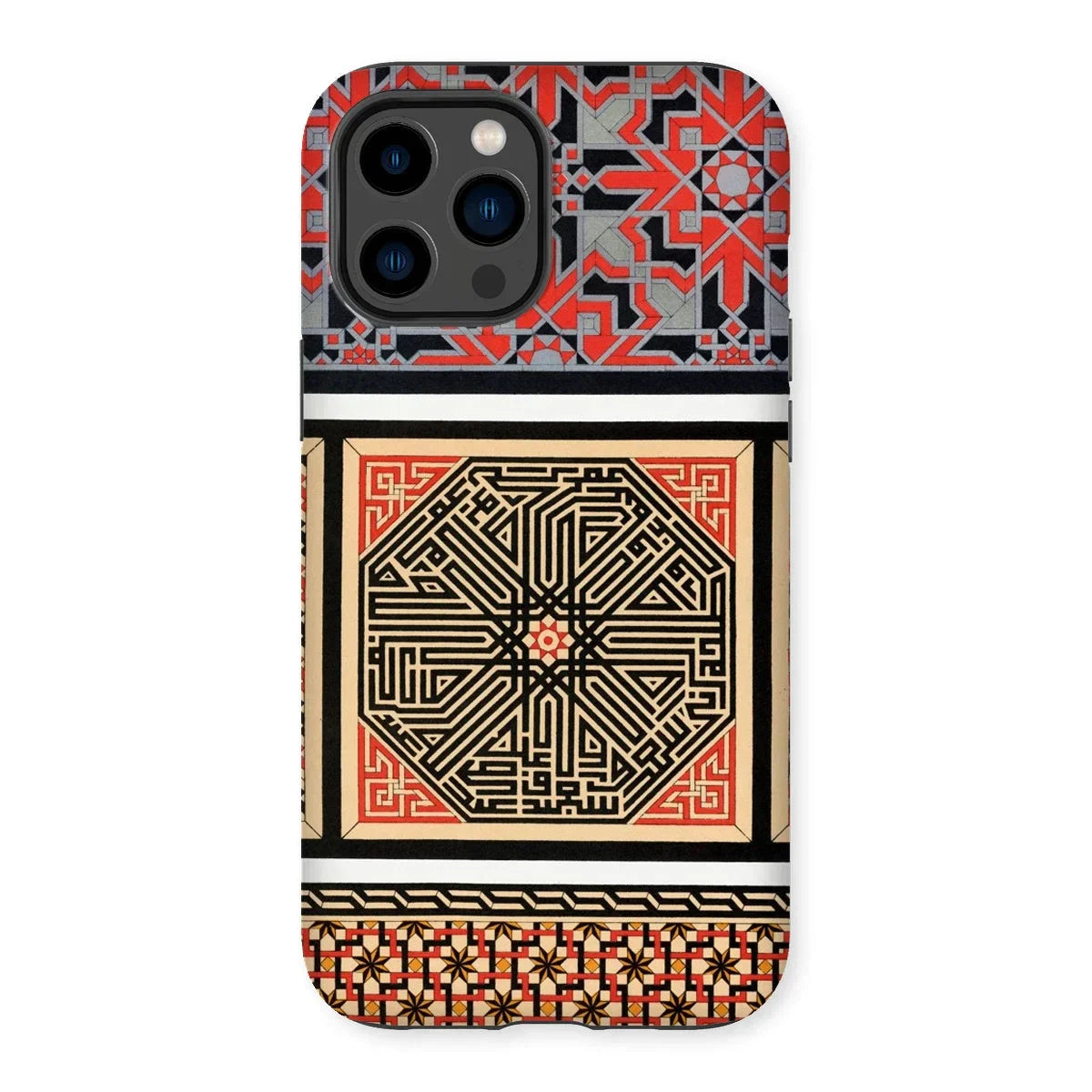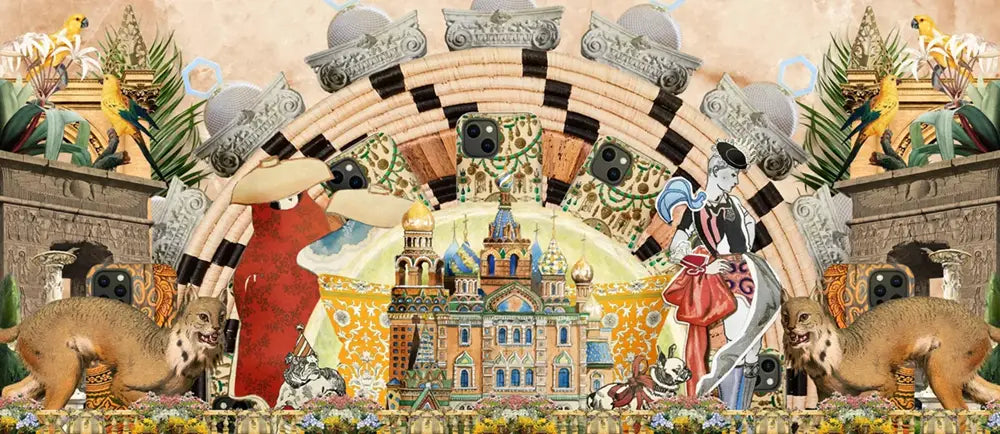He walked with paper where others brought picks. Where empire pillaged in crates, he traced in graphite. Émile Prisse d’Avennes didn’t conquer ruins—he communed with them. Not content to simply observe, he absorbed: domes whispered ratios to him, mihrabs offered grammar, and every crumbling cornice became a conversation.
Prisse d’Avennes wasn’t a man cataloging the past—he was a human seismograph, recording the aftershocks of civilizations refusing to vanish quietly. With one foot in Enlightenment geometry and the other in Cairo’s dust-sung breath, he built not monuments, but memory itself.
What he drew didn’t just depict. It remembered in advance. And what emerges from the layers of his work isn’t nostalgia or salvage—it’s a kind of defiance. Before the stones could be silenced, he made them speak. And now, more than a century later, their voices remain inked in his archive, waiting to be heard in full.
Key Takeaways
-
Architect of Cultural Memory: Prisse d’Avennes meticulously charted Egypt's architectural heritage, transforming transient structures into enduring records.
-
Fusion of Art and Anthropology: His works seamlessly blend artistic expression with ethnographic detail, offering a multidimensional perspective on Egyptian culture.
-
Preservation Amidst Transformation: Through innovative techniques, Prisse ensured the survival of Egypt's artistic legacy during a period of rapid change.
-
Navigating Colonial Complexities: Operating within the frameworks of Orientalism, his work reflects the tensions between appreciation and appropriation.
-
Enduring Influence: Prisse's comprehensive archives continue to inform contemporary studies, underscoring the lasting significance of his contributions.
Stone as Sentence: Prisse d’Avennes Among the Minarets
Beneath the ochre latticework of a Fatimid arch, where prayer’s echo still coils around geometry like incense, a young French engineer once paused—graphite in hand, paper trembling in the dawn-warmed air. He wasn’t a traveler sketching curiosities. He was a surgeon of form, dissecting Cairo’s skyline by light and shadow, ink and arc. Each arabesque etched onto his page became a keystone of memory; each dome, a glyph in a silent language of grandeur. Émile Prisse d’Avennes—architect, antiquarian, obsessive—arrived not to gaze, but to document. And in that pursuit, he gave Europe a kaleidoscopic ledger of Islamicate architecture, from carved Mamluk mihrabs to the hieroglyph-flanked pylons of Luxor.
Prisse wandered not as a casual chronicler of decline but as a forensic aesthete—extracting data from the bones of mosques, palaces, and tombs. The streets of Cairo became his open-air manuscript, each brick and niche a stanza. He captured life’s residue: merchants mid-haggle, prayer beads ticking through fingers, blue-glazed tiles catching sun like a call to remembrance. His mission carried the watermark of an age where conquest disguised itself in classification. Prisse’s eye, trained in Enlightenment order, searched for coherence; his hand, shaped by 19th-century longing, tried to still the city’s motion into grids and figuration. In Cairo’s twilight he wasn’t just a chronicler. He was preservation’s paradox—mapping beauty while midwifing its exile.
From Flanders to the Nile: Prisse’s Passage into an Oriental World
No one warned young Prisse d’Avennes that the map he would follow eastward had no legend for self-erasure. Born in the administrative gray of Avesnes-sur-Helpe—an ironed place where surnames outranked instincts—he should have grown into law, into protocol, into a man who measured dikes and signed contracts. Instead, he rerouted. Swapped lineage for longitude. Drafted himself into the Greek War of Independence. Eyed India. Hovered in Palestine. Drifted toward Egypt like a coin sliding across a slanted table.
By 1827, he had arrived in Cairo. Employed by Muḥammad ʿAlī Pasha to teach geometry and sketch hydraulic dreams, Prisse could’ve faded into the bureaucracy of canal plans and levee math. But instead, something cracked. He dropped his surname into the Nile and surfaced as Idriss Efendi—Arabic-spoken, kaftan-clad, fingers ink-stung from copying Qur'anic scripts by lamplight. Not disguise. Mutation. His journals recorded not just measurements, but invocations: charms against toothaches, village gossip about jinn, the whispered recipe for calming a bewitched donkey. Not romanticism. Record.
By the time his daughter, Zohra Hanim, was born to a woman named Cherifa Soliman, Prisse was already translating more than language. He was listening to the city’s murmurings through the callouses of its architecture. What France had taught him to calculate, Cairo taught him to believe: that a building could bleed if you traced it wrong. That the curve of a mihrab wasn’t just spatial, but theological. That lintels talked back.
He may have converted to Islam. He may not have. What matters more is that he copied its prayers into his notebooks with the same meticulous ink he used for dome elevations. Faith, for Prisse, was perhaps less a revelation than a rubric—something you diagrammed in layers, like a collapsed minaret or a flaking fresco.
But make no mistake—he didn’t dissolve. He doubled. The very habits that let him blend also let him extract. He was fluent in dissonance. Intimacy didn’t preclude extraction; it disguised it. Like many of his Saint-Simonian peers, Prisse saw Egypt not as foreign, but as embryonic—an earlier version of Europe waiting to be archived and improved. What separated him from the snuffbox Orientalists was not purity but obsession. Where they composed fantasy, he triangulated data. Where they sipped cardamom tea on shaded balconies, he sketched tombs while mosquitos drained his ankles.
Cairo in the 1830s was no passive scroll. It was contested architecture: French engineers whispering Bonapartist dreams, British agents tracing shipping routes with imperial chalk, Ottoman governors flexing borrowed authority. In that chaos, Prisse embedded like a fever—slipping past borderlines not by force, but by fluency. His maps weren’t maps. They were translations of a city’s vanishing nervous system, inked artery by artery.
And still: the paradox never blinks. He belonged enough to sketch without suspicion, but never enough to disappear into what he drew. Every mosque plan he published in Paris carried the ghost of its context: the trust he bartered for access, the knowledge traded under ceilings cracked by sun and time. He was both archive and aperture. He wasn’t between cultures. He was the tension braided through them.
Mapping the Monuments: Surveying Cairo’s Stone and Light
By the mid-1830s, Prisse d’Avennes had relinquished military appointment not with ceremony but with a shrug. Damietta’s barracks, once a post for topographical instruction, had calcified into administration—a vocabulary of rubber stamps and delays. Cairo’s stones, by contrast, still spoke. So he pivoted, not with fanfare but friction: he replaced bureaucracy with pilgrimage, instruction with recording, military order with the restless grid of fieldwork. From then on, his allegiance belonged to architecture—recorded, not imagined; measured, not romanticized.
Everywhere he went—mosques gasping under soot, palaces half-digested by time, minarets skewed like broken tuning forks—he sketched, paced, pressed. Not just with pencil but with method: quill, compass, linen paper, albumen photography, transparent calques, and hand-traced estampages. His fieldwork was cartography crossed with autopsy. He disassembled space into inkable forms. A dome wasn’t curved—it was arc, weight, tension, shadowfall. A column capital wasn’t ornate—it was a modular fragment, repeatable. Cairo, in his pages, became a grid of proportional systems overlaid with the residue of weather and time.
His notebooks—now in the Bibliothèque nationale de France—are less documents than accumulations. Accretions. They bear the tactile structure of a mind resisting impermanence: diagrams swollen with annotations, elevations layered beside footnoted anecdotes of street life or structural damage. Nothing static. Even damage was dynamic.
When direct acquisition of monuments—always a temptation, increasingly a crime—grew logistically fraught and diplomatically sensitive, he adapted. Instead of removal, he engineered duplication. During the official 1858–1860 mission to Upper Egypt, he enlisted Édouard Jarrot, a Parisian photographer, and Willem de Famars Testas, a Dutch painter. Jarrot’s camera captured façades in sharp exposure, and then Testas painted over them, layering atmosphere, adjusting figures, sometimes reintroducing architectural flourishes too faint for the lens. These were not forgeries. They were emphatic reinforcements: hybrid records in which stone, shadow, and supposition coexisted.
His methods were protean. A rubbed inscription was stored not just as image but as surface-memory: textured, repeatable. A wall traced in calque wasn’t decoration—it was evidence. Whitewash might be applied to vaults to extract cleaner contrasts; a scaffold might be erected simply to reach a single cornice. All without dislodging a stone. While others packed crates, Prisse made the crate unnecessary: the monument folded into paper, scaled down, context noted, defects intact. It was fidelity without theft.
This was not passive cataloguing. It was tactical preservation. A full architectural grammar, rendered portable, repeatable, legible across cultural distance. What the French state failed to maintain, and the Ottoman administration couldn’t prioritize, Prisse translated into diagram and ink. Not to restore—but to prevent forgetting.
So Cairo’s stone and light became transmissible. In Paris, the lithographs reproduced these structures in layers: shadows from the Nile’s angle at noon, inscriptions worn down to pre-language, arabesques clipped by later additions. Architects studied them. Collectors hoarded them. Museums used them as proxy. The city itself had not moved, but it had multiplied. And behind each copy was the trace of one man’s compulsion: to fix in graphite what history was allowing to decay.
Of Palaces and Mosques: L’Art Arabe, Cairo’s Open Gallery
The book was not a book. It was a corridor. A mausoleum. A portal that folded time into page and ornament into language. Between 1869 and 1877, Prisse d’Avennes released L’Art arabe d’après les monuments du Caire depuis le VIIe jusqu’au XVIIIe siècle—three volumes printed in Paris but conjured from Cairo’s bones. This was no aesthetic bauble. It was an architectural resurrection: over one hundred chromolithographs depicting mihrabs, mashrabiyyas, arabesques, muqarnas, wooden domes, stone cornices, fountain spouts, and stairwells sliced through by sun. He did not assemble an art book. He built a portable gallery—Islamicate, Egyptian, medieval, impossible to replicate by eye alone.
The original vision had been more decadent still. He had pitched Miroir de l’Orient, a serialized procession of ornamented pages, a spectacle for the imperial salon. The project floundered in logistics. But the vision condensed—tightened, darkened, focused—and emerged as L’Art arabe: not spectacle, but documentation. Not fantasy, but structure. No pastel façades. No opium haze. Just the fierce clarity of form repeating across centuries.
In those pages, tilework becomes tessellation. Calligraphy interlocks with architecture. A cornice lifted from a madrasa in Bāb Zuweila echoes another from a 10th-century minaret. Each illustration carries footnoted geography, historical placement, structural behavior. Symmetry is never a metaphor. It is an argument.
But L’Art arabe was not mute. Its introduction seethes with intention. Prisse declares Islamic art neither derivative nor exotic. It is, in his telling, the convergence of the Sassanian East and the Hellenistic West, made new beneath the theological pressures of Islam. Geometry here is not ornament—it is devotion calcified. He wanted Europe to see that its idea of abstraction had already been outpaced by the masons of Cairo, that its cathedrals were not alone in their ecstasy of form.
He was not trying to glorify. He was trying to correct.
What he made was not neutral. His images were reframed, colored, intensified. Testas’ overlays added atmospheric context, sharpened contour. Prisse didn’t shy from staging. These weren’t snapshots. They were interpretations, bent toward preservation, yes, but also toward influence. He wanted this architecture not merely admired, but studied, emulated, built upon.
To Western architects, L’Art arabe became manual and manifesto. It was referenced in facades, echoed in columns, mimicked in stained glass and staircases. Prisse had not only documented Cairo’s medieval visual grammar—he had exported it. The city’s decorative syntax traveled, not as artifact, but as pattern language. A form of influence only possible because the source was crumbling.
Pharaoh’s Legacy: Documenting Ancient Egypt and the Papyrus Archive
Prisse d’Avennes had two devotions: the ornamented present of Cairo and the excavated eternity of the Nile’s older gods. He did not see Islamic and Pharaonic Egypt as opposites. He saw them as strata—palimpsests of a single continuum. Where others segmented history into museum vitrines, he built a timeline out of pigment and ruin. His second opus, Histoire de l’art égyptien d’après les monuments depuis les temps les plus reculés jusqu’à la domination romaine, begun in the 1840s and published in ten volumes in 1878, was the result of this layered seeing. Not just a history. A scaffold of visual argumentation stretching from Saqqara to the reign of Caesar.
But Prisse had begun earlier. In 1842, on the walls of a Karnak temple, he encountered the Chambre des Ancêtres—a painted cryptic list of royal lineage. He did not petition. He took it. Smuggled it out of Thebes under the pretext that a German team might claim it first. The ethics were murky. The result was clear: the Louvre gained a monumental piece of royal historiography. Salvaged or seized? Both. Always both.
That same year, he acquired the Papyrus Prisse, a Middle Kingdom scroll inked with funerary instructions—what some called “the oldest book in the world.” He donated it to the royal library. No fanfare. Just another artifact saved from neglect, wrapped in European permanence.
But saving, for Prisse, meant copying more than collecting. Through the 1840s and ’50s he amassed rubbings, drawings, scaled diagrams of tombs, statues, pylons. His first attempt, Monuments égyptiens, had been mutilated by publishers—its plates scrambled, its sequence broken. He swore never again. Histoire de l’art égyptien was his corrective. And unlike the ornamental flourishes of L’Art arabe, this project was stone-heavy: necropolises, bas-reliefs, Osirian statuary, Ramesside colonnades. Everything measured. Nothing guessed.
He wasn’t seduced by the exotic. He was gripped by chronology. He traced cartouches like genealogists trace surnames. He did not paint dynasties—he plotted them. From mastaba to hypostyle, he documented not myth but material: pigment recipes, burial proportions, the gradient logic of pyramid ramps.
Still, fragility haunted the work. When he tried to reconstruct the burial chamber murals of Ramses IV in Paris, conservators applied a hot varnish. The paint disintegrated. What had endured for thirty-five centuries dissolved under modern carelessness. Prisse’s biographer described it not as an accident, but as a cultural violence born of ignorance.
And violence didn’t end there. Though he had done more than any contemporary to preserve Egypt’s visual legacies, he was passed over for Louvre conservatorship. His rival was chosen. His funding flickered. He took a post in Algeria overseeing quarries—not for passion, but for survival. His notebooks remained, but the accolades did not arrive.
Still, he didn’t stop. He had no concept of retirement. Until the end, he was tracing—whether on limestone or onion-skin paper, whether in tomb or printshop. The work was never finished. It could only be prolonged, duplicated, disseminated. The only permanence he trusted was repetition.
Orientalism and Empire: A Critical Lens on Prisse’s Gaze
No inkstroke from the 19th century escapes empire. Prisse d’Avennes knew this, even if he didn’t name it. He operated at the crux of desire and documentation—where every measurement of a mosque’s eavespan doubled as a gesture of ownership. To draw was to delimit. To annotate was to imply authority. His archive, exquisite and exhaustive, was never outside power’s perimeter.
He was not alone in the field. Napoleon’s shadow still loomed over Egypt, its scientific corps having seeded a colonial hunger that persisted long after the cannons fell silent. By the time Prisse was sketching mihrabs and tracing Coptic bas-reliefs, the British had joined the imperial relay, layering Ottoman bureaucracy with European extraction. Into that contest Prisse inserted himself—not as soldier, but as seer. Yet what he saw was never unfiltered. The lens carried intention.
Even photography, that supposed index of truth, bent to aesthetic will. During his Upper Egypt mission, the camera lens of Édouard Jarrot captured temple façades, but it was Willem de Famars Testas who repainted them—sharpening lines, inserting human figures, restaging light. The result wasn’t deceitful, but neither was it innocent. These weren’t documents. They were reconstructions aimed at a European imagination that conflated ruin with revelation.
What complicates Prisse is that he wasn’t a voyeur. He embedded. He learned Arabic, wore Egyptian dress, befriended imams and engineers. He listened. His notebooks throb with village dialects, superstitions, street poetry. This wasn’t mimicry. It was method. And yet—he still published for Paris. Still arranged Cairo’s past into grids palatable to the salons and academies of the metropole. The hybrid gaze he embodied—intimate, reverent, extractive—defies neat classification.
Scholars have called him a paradox. Mercedes Volait has noted the “exceptional amount of time, energy and personal resources” he invested into the preservation of Egyptian visual culture. He consulted local sheikhs. He traced graffiti no museum would house. His ethnographic sketches captured not just monuments, but the people moving around them—workers, worshippers, children half-lost in shadow. But even these moments were curated.
Modern postcolonial critique has dismantled the myth of the objective collector. Prisse cannot be read outside that dismantling. He is a figure of contradiction: simultaneously preserving and framing, simultaneously documenting and erasing. His publications are masterworks. They are also interventions. The very beauty they circulate comes with a cost—the loss of context, the rearrangement of history to suit foreign expectations.
Yet to dismiss him as a mere agent of Orientalism is to simplify what is dense. His drawings contain vanished patterns, his tracings record surfaces now obliterated by neglect or modernization. Without him, the archive would be smaller, hollower. His contradictions do not absolve him. But they do remind us that even empire’s chroniclers can sometimes grieve what they inadvertently help dismantle.
Legacy Etched in Ink and Stone
Émile Prisse d’Avennes died without fanfare, but his archive didn’t. It metastasized. In 2011, more than a century after his last tracing, the Louvre and the Bibliothèque nationale de France convened a reckoning: Visions d’Égypte, an exhibition that stitched his drawings, architectural plans, papyrus fragments, lithographs, and notebooks into a single frame—one part monument, one part question. Visitors moved between vitrines like between centuries. The past wasn’t revived. It was reprinted.
The curators knew what they were doing. They displayed not only his visual achievements but the conditions under which they were made. His rubbings were flanked by commentary. His calques were contextualized by what they excluded. Yet the power of the images held. Mihrabs that no longer exist hovered in pigment and line. Floorplans preserved proportions of buildings since bulldozed or gentrified beyond recognition. What empire extracted, Prisse sometimes translated.
That translation continues. Over 1,200 of his drawings and tracings are now being digitized. Not just scanned, but re-contextualized—layered with metadata, linked to historical site records, annotated by contemporary scholars. These are not static documents. They’re active tools: used by conservators repairing mosques, by historians tracking visual genealogies, by artists dissecting colonial aesthetics. His work, born from graphite and ink, now lives in pixels and hyperlinks. It’s not resurrection. It’s transference.
But the digital archive doesn’t simplify the man. If anything, it intensifies the contradictions. His methods—precise, tactile, astonishing in scope—still dazzle. But the questions persist: Who chose what was worth preserving? Why did his Paris editions circulate while local oral histories withered? What patterns were framed and which erased? In the archive’s glow, these tensions don’t fade—they flicker.
Postcolonial critique hasn’t invalidated his work. It has complicated its reception. Prisse now stands not as exemplar or villain, but as a hinge: between empire and conservation, between admiration and appropriation. A cautionary hero whose fidelity to form never fully escaped the structures of power it was entangled in.
In the margins of his notebooks, Prisse recorded more than measurements. He scribbled conversations—half-heard stories from fellahin, aphorisms from court scribes, invocations murmured during tea. These fragments remain untranslated, suspended like dust motes over a finished sketch. They are the parts no publisher asked for. They are also what make the archive breathe.
He moved through time not as a collector, but as a conduit. Between Cairo and Paris, between mosque and museum, between empire and entropy, he built something too unruly to canonize. A lantern, maybe—not a beacon, not a shrine. Just a lantern in the archive, flickering across the ruins and the records, asking us to read more carefully, to look without assuming ownership, to trace without extracting.
Reading List
- Prisse d'Avennes, Émile. L'art arabe d'après les monuments du Kaire depuis le VIIe siècle jusqu'à la fin du XVIIIe. Paris: Morel, 1869–1877. Link
- Prisse d'Avennes, Émile. Histoire de l'art égyptien d'après les monuments depuis les temps les plus reculés jusqu'à la domination romaine. Paris: Arthus Bertrand, 1878. Link
- “Prisse Papyrus.” Wikipedia. Link
- “La Chambre des Ancêtres du temple d’Amon-Rê à Karnak.” CNRS. Link
- “Émile Prisse d'Avennes.” Wikipedia. Link
- “Arab Art as Seen Through the Monuments of Cairo.” Library of Congress. Link
- “Visions d'Égypte: Émile Prisse d'Avennes (1807–1879).” Éditions de la BnF. Link
- “Emile Prisse d'Avennes.” Musée d'Orsay. Link
- “Emile Prisse d'Avennes.” Swaen.com. Link
- “Arab Art / Arabische Kunst / L'Art Arabe: The Complete Plates From L'Art Arabe.” Amazon. Link























